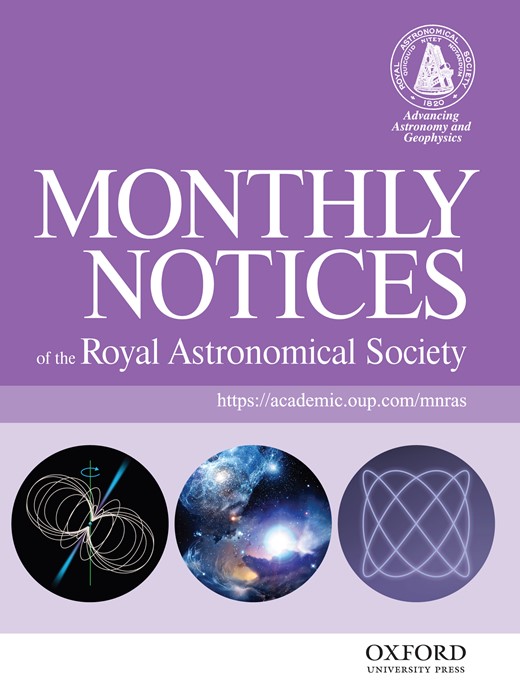-
PDF
- Split View
-
Views
-
Cite
Cite
S. J. Maddox, G. Efstathiou, W. J. Sutherland, The APM Galaxy Survey — III. An analysis of systematic errors in the angular correlation function and cosmological implications, Monthly Notices of the Royal Astronomical Society, Volume 283, Issue 4, December 1996, Pages 1227–1263, https://doi.org/10.1093/mnras/283.4.1227
Close - Share Icon Share
Abstract
We present measurements of the angular two-point galaxy correlation function, w(θ), from the APM Galaxy Survey. Various estimators of w are investigated using simulated galaxy catalogues and analytic arguments, and we use the estimators that are least affected by errors in the galaxy counts. An error analysis of the plate matching procedure in the APM Galaxy Survey shows that residual plate-to-plate errors bias our estimates of w by no more than ∼ 1 × 10−3. A direct comparison between our photometry and external CCD photometry of over 13 000 galaxies from the Las Campanas Deep Redshift Survey shows that the rms error in the APM plate zero-points lies in the range 0.04–0.05 mag, in agreement with our previous estimates. This comparison also sets tight limits on the variation of our photometry with right ascension. We find no evidence for systematic errors in the survey correlated with the date of plate scan or exposure. We find that atmospheric extinction and obscuration by dust in our Galaxy have negligible effect on w. The estimated plate-to-plate errors are independent of limiting magnitude for bJ < 20. At fainter limits the star-galaxy classification becomes less reliable and plate-to-plate variations in the completeness of the survey are introduced.
We use deep redshift surveys to estimate the redshift distribution of galaxies in the APM Galaxy Survey at various magnitude limits. These redshift distributions are used to predict how w should scale as a function of limiting magnitude. Our estimates of w are in excellent agreement with the expected scaling relation, providing further evidence that systematic errors in the APM survey are small. We explicitly remove large-scale structure by filtering the APM galaxy maps and conclude that there is still strong evidence for more large-scale structure than predicted by the standard scale-invariant cold dark matter (CDM) model. We compare the APM w, and the three-dimensional power spectrum derived by inverting w, with the predictions of scale-invariant CDM models. We show that the observations require Γ = Ω0h in the range 0.2–0.3 and are incompatible with the value Γ = 0.5 of the standard CDM model.



